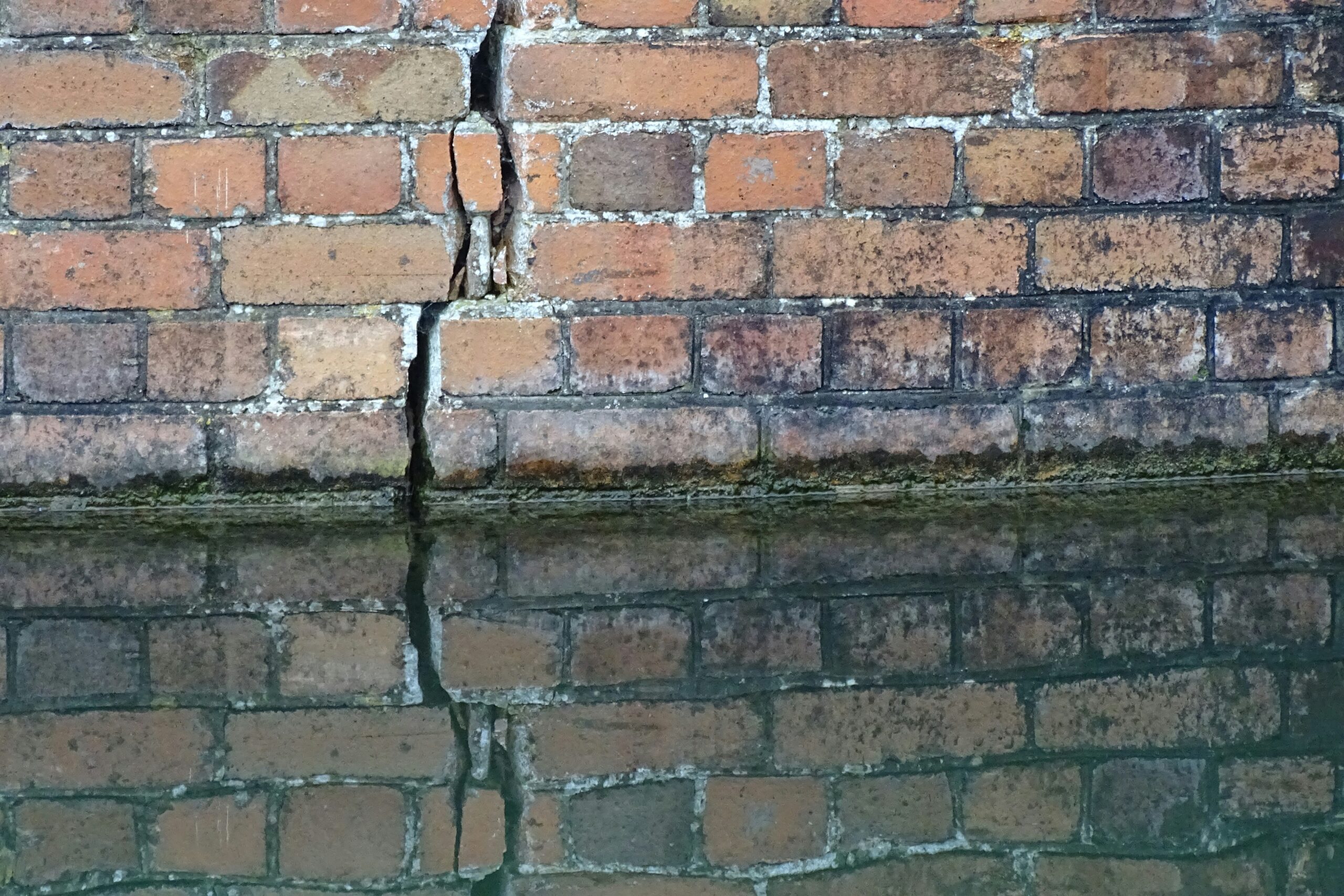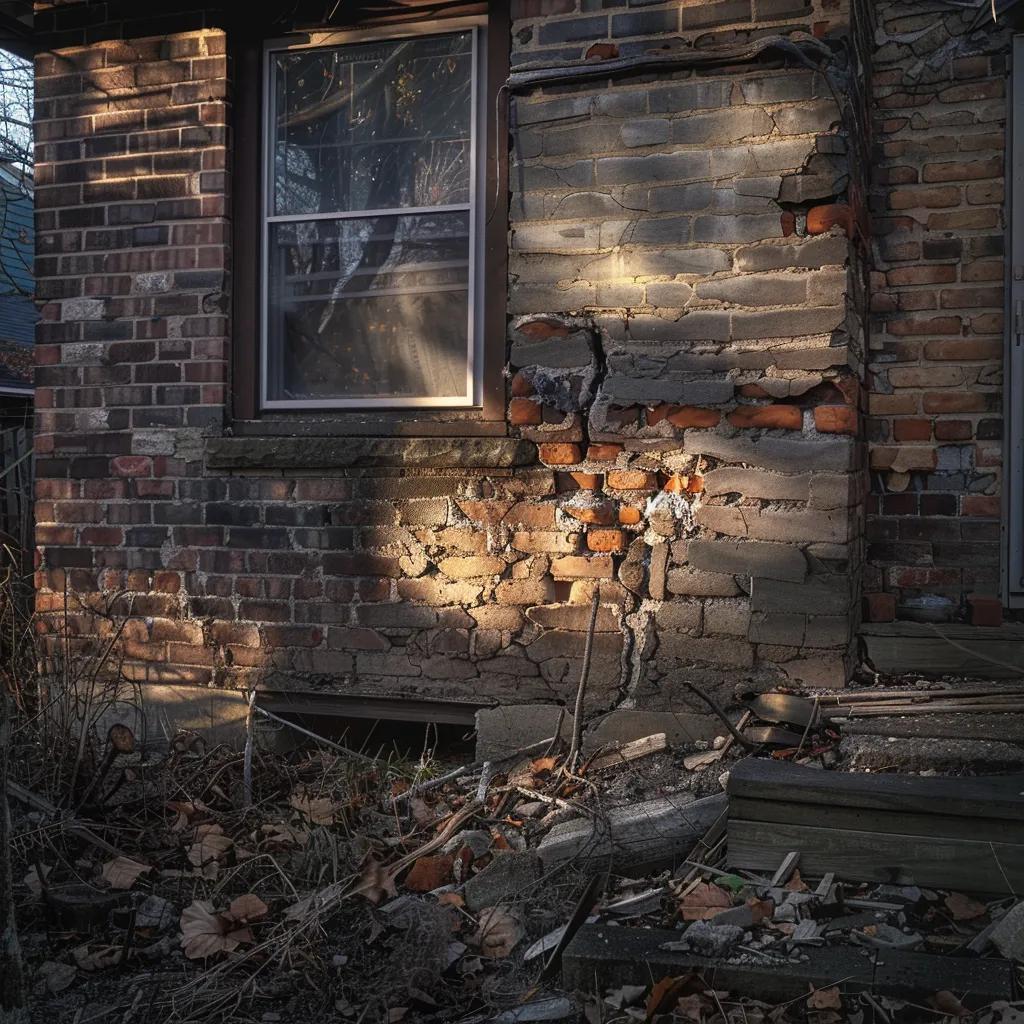Why Cracked Walls Signal Foundation Issues
Cracked walls can be more than just an eyesore; they often indicate serious foundation problems. This post will explore how different types of cracks signal underlying issues, how weather changes contribute to these cracks, and when it’s time to call for professional help. Readers will learn valuable insights to help them diagnose wall cracks effectively and understand preventative measures. If you’ve noticed cracks in your walls, understanding their significance can save you money and protect your home from further damage.
Understanding Cracked Walls as Indicators of Foundation Issues
Cracks in walls often serve as clear indicators of underlying foundation issues. These fissures can occur due to stress on the masonry, which results from shifting soil or inadequate drainage. Recognizing the types of cracks can help pinpoint the severity of the problem.
Horizontal cracks typically signal significant stress on a wall, often resulting from pressure against the masonrycaused by soil movement. In contrast, vertical cracks are usually less severe but can still indicate foundationsettlement. Understanding these distinctions provides critical insight into the condition of the building material.
The presence of cracks in walls can compromise not only the aesthetic value of a property but also its structural integrity. When the mortar joints start to weaken, it can accelerate the deterioration of the entire wall. This highlights the importance of addressing foundation issues promptly to avoid costly repairs later.
Taking preventative measures, such as implementing basement waterproofing, can mitigate potential foundation problems. Proper drainage and waterproofing techniques can help stabilize the foundation, reducing the occurrence of cracks in walls. Homeowners should prioritize these solutions to maintain their properties effectively.
Furthermore, regular inspections can help identify early signs of foundation distress, allowing for timely interventions. Ignoring cracks or other indicators may lead to more severe foundation damage over time. Understanding the relationship between cracks in walls and foundation issues is essential for maintaining a safe and sound home.
Types of Cracks and Their Implications
Cracked walls can reveal significant foundation issues. Hairline cracks might indicate minor concerns, while more pronounced vertical cracks often signify structural implications. Horizontal cracks are critical, suggesting potential structural integrity problems. Similarly, diagonal cracks may highlight infiltration risks and foundation instability. Understanding these types is crucial for homeowners and is a key focus for structural engineers assessing any necessary interventions.
Identifying Hairline Cracks and What They Mean
Hairline cracks are often the first visible signs of foundation problems, and homeowners should not overlook their presence. These minor fissures can appear in drywall or plaster, usually around door frames and windows. While hairline cracks might seem insignificant, they can indicate underlying issues, such as soil movement or moisture retention that may lead to leaks and more serious deterioration.
If left unaddressed, hairline cracks can evolve into larger structural issues, potentially inviting moisture and mold growth. Periodic inspections are essential to monitor these cracks, particularly after heavy rainfall or roof repairs, which could exacerbate foundation shifts. Homeowners might consider utilizing joint compound for a quick repair, but they should also investigate the root cause of the cracks to prevent future occurrences.
Taking proactive measures can help manage the implications of hairline cracks. Repointing, for example, can restore the integrity of mortar joints and minimize further damage. Addressing these minor issues promptly can safeguard against costly repairs and promote a more stable foundation, ultimately protecting the home’s overall health and safety.
Understanding Vertical Cracks and Their Significance
Vertical cracks in walls often raise concerns regarding the foundation‘s stability. These structural cracks can occur as a result of soil compaction, where the ground beneath the foundation settles irregularly. As the supporting soil shifts or contracts, stress is placed on the foundation, leading to visible vertical fissures that need careful assessment.
In many cases, vertical cracks point to minor settlement issues, particularly in newer constructions where soil may not have fully settled. Nevertheless, significant vertical cracks can indicate deeper foundation problems that may worsen over time if ignored. Homeowners should monitor these symptoms closely and consult a foundation expert to ensure proper diagnosis and remediation.
Addressing vertical cracks promptly can help prevent further damage to plasterwork and other structural elements of a home. The integrity of the walls can be compromised if moisture seeps in through these gaps, leading to mold or further deterioration. Taking action to reinforce and stabilize the foundation, along with regular maintenance, can protect the overall health and value of the property.
Analyzing Horizontal Cracks and Structural Concerns
Horizontal cracks in walls serve as critical indicators of potential foundation distress, often stemming from excessive lateral pressure due to soil shifting or frost heave. In construction, these cracks typically suggest that the foundation is struggling to withstand forces acting upon it, which may be exacerbated by inadequate drainage solutions. Recognizing the significance of horizontal cracks is essential for homeowners to safeguard their properties and avoid costly repairs down the line.
Addressing these issues may require thorough assessments conducted by professionals familiar with structural integrity. Homeowners might consider various repair options that include the use of steel screws for reinforcement or even wall anchors to stabilize the affected areas. A proactive approach to repairs can significantly diminish future risks associated with horizontal cracks and protect the overall value of the home.
Regular maintenance and timely inspections can help ensure that horizontal cracks are identified early, allowing for more manageable solutions before the issue escalates. Homeowners should take care to monitor these cracks continuously and be attentive to changes that may arise in the wall surface. Using sandpaper for minor surface repairs can be a quick fix, but it is vital to address the underlying causes to maintain structural soundness.
Evaluating Diagonal Cracks and Their Relationship to Foundation Stability
Diagonal cracks often indicate foundation instability, which can arise from uneven pressure on the concrete slab due to soil expansion or contraction. These cracks frequently appear at angles across walls and can extend down to the floor, highlighting potential issues with the foundation‘s support system, such as inadequate piers. Homeowners should pay close attention to these signs, as they may suggest that the underlying issues require immediate attention.
When a home experiences significant stress from shifting soil, diagonal cracks may develop as a result of the pressure exerted on the walls. Such cracks can also lead to moistureinfiltration if not addressed, potentially damaging both the concrete slab and the interior spaces. Caulking these cracks might be a temporary solution, yet it is essential to identify and rectify the root cause to ensure long-term stability.
Evaluating diagonal cracks is crucial for understanding the overall health of a home’s foundation. Homeowners are encouraged to have a professional assess the cracks and the supporting structures, as this can determine whether additional piers or foundationreinforcement is needed. Taking these steps early can prevent more severe problems down the line and help maintain the integrity and value of the property.
How Weather Changes Contribute to Wall Cracks
Moisture levels in the soil play a significant role in the movement of foundations, ultimately leading to foundation wall cracks. Temperature fluctuations can cause materials to expand or contract, leading to visible damage in walls and ceilings. Drought conditions increase structural stress, impacting the home’s stability, while seasonal changes further influence foundation integrity. Each of these factors emphasizes the importance of proper ventilation and home repair strategies.
The Effect of Moisture on Soil and Foundation Movement
Moisture has a direct impact on the soil surrounding a foundation, leading to shifts that can generate cracks in drywall and other internal structures. When soil becomes saturated with water, it expands and puts pressure on the foundation, which can result in visible wall damage. Homeowners should remain vigilant and take note of any emerging fissures, as these may hint at underlying foundation movement linked to excess moisture in the ground.
Conversely, during dry spells, soil can contract, creating voids underneath the foundation. This fluctuation can further compromise the stability of a home, resulting in more pronounced cracks appearing in walls. The need for immediate attention to these issues is critical to prevent extensive water damage and costly repairs, including the potential need for spackling paste to remedy cosmetic flaws within the home.
Effective home renovation strategies often include addressing moisture control around the foundation. Implementing proper drainage, such as installing gutters and downspouts, can significantly reduce the risk of water pooling near the foundation. By ensuring that moisture levels are managed, homeowners can maintain the structural integrity of their properties, safeguarding against the eventual repercussions of foundation movement and wall cracking.
Temperature Fluctuations and Their Role in Wall Damage
Temperature fluctuations can significantly impact the integrity of a home’s walls by causing expansion and contraction of building materials. This movement may result in cracks, particularly when moisture levels are not effectively managed. Homeowners are encouraged to consider implementing a dehumidifier to control interior humidity, as excessive moisture can exacerbate the effects of temperature changes on wall structures.
In areas where temperature changes are common, proper drainage systems play a critical role in safeguarding against foundation issues. When drainage is inadequate, rainwater can accumulate around the foundation, leading to increased moisture that affects wall stability. Renovation efforts should focus on enhancing drainage solutions, such as installing gutters that direct water away from the home, to minimize the potential for damage.
Recognizing the relationship between temperature variations and wall damage allows homeowners to take proactive steps for repairs. Monitoring cracks and addressing them promptly can prevent further deterioration of structural elements. By understanding how moisture interacts with temperature changes, homeowners can better maintain their properties and ensure a longer-lasting foundation.
Drought Conditions Leading to Structural Stress
Drought conditions pose significant risks to a home’s foundation, often leading to critical structural issues. As the soil around a foundation dries out and shrinks, it creates voids that can cause the concrete to settle unevenly. This settling may manifest in the form of cracks in plaster and walls, signaling a foundation problem that requires immediate attention.
The lack of moisture in soil can contribute to increased stress on foundation materials, pushing them beyond their limits. Homeowners may notice vertical or diagonal cracks forming as the foundation shifts due to dryness. Such shifts not only affect the plaster and interior finishes but also compromise the structural integrity of the entire building.
To counteract the effects of drought on a foundation, implementing reinforcement strategies is essential. Techniques such as installing piers or solving drainage issues can help stabilize the foundation and prevent further damage. By proactively addressing these concerns, homeowners can mitigate the risks associated with drought conditions and protect their properties from costly repairs in the future.
Seasonal Changes That Impact Foundation Integrity
Seasonal changes, particularly shifts between heat and cold, have significant effects on a home’s foundation. When temperatures rise, claysoil around the foundation may expand, putting additional pressure on the structure. This expansion can lead to diagonalcracks in walls, indicating potential foundation movement that homeowners must address swiftly to prevent further damage.
During colder months, the contraction of claysoil can create voids underneath the foundation, leading to uneven settling. These shifts can cause previously stable walls to develop cracks, which compromise the structural integrity of the entire building. Homeowners should remain vigilant during seasonal transitions, as monitoring these changes helps identify foundation issues before they escalate.
Effective drainage solutions can mitigate the risks associated with seasonal changes. Installing proper gutters and downspouts directs water away from the foundation, reducing the pressure on claysoil during wet seasons. By taking proactive measures to manage moisture and monitor heat-induced soil expansion, homeowners can protect their property from costly repairs related to foundation movement and wall damage.
When to Seek Professional Help for Cracked Walls
Homeowners should consider seeking professional help when they notice significant drywall cracking or multiple wall cracks in their property. These signs often suggest underlying foundation issues that require a thorough assessment to determine the cause and necessary repairs.
If settlement cracks become larger over time, it may indicate that the foundation is unstable. A foundation specialist can evaluate the situation, providing insights into potential settlement problems and recommend appropriate waterproofing solutions to protect the structure.
In homes experiencing climate-related stress, such as severe changes in temperature or moisture levels, monitoring cracked walls becomes essential. Professionals can assess how climate impact contributes to structural changes, ensuring that homeowners address vulnerabilities effectively.
Furthermore, if cracks appear near doors or windows, it may point to issues with surrounding lumber as well as overall structural integrity. Engaging an expert can help identify and rectify any related problems before they escalate and jeopardize the home’s stability.
Ultimately, early intervention is crucial for maintaining the health and safety of a property. Homeowners should prioritize getting professional advice when they observe signs of damage, as timely repairs can significantly extend the life of their home.
Preventative Measures to Mitigate Cracking Due to Weather
Maintaining proper drainage around foundations is essential to mitigate stresscaused by extreme weather. Home improvement strategies like utilizing moisture barriers protect structures from water damage, while regular inspections enable early detection of potential issues. These practices contribute to soil stabilization, ultimately preserving the integrity of stucco and other wall materials against deterioration.
Maintaining Proper Drainage Around Foundations
Proper drainage around foundations is vital in preventing foundationsettlement, which can lead to significant structural damage. Installing gutters and downspouts directs rainwater away from walls, minimizing the risk of moisture accumulation around the foundation. This proactive measure can significantly reduce the chances of subsidence, ensuring that the home’s stability remains intact even during heavy rainfall.
Regular inspections of drainage systems help homeowners identify potential issues before they escalate, allowing for timely interventions. Checking for clogs in gutters or improper grading can reveal problems that may contribute to increased humidity levels near the foundation. Addressing these concerns early can protect walls from the harmful effects of excess moisture, which may lead to cracks and other forms of deterioration.
Incorporating effective drainage solutions, such as French drains or surface drains, can further safeguard against subsidence and associated wall damage. These systems help divert water away from the foundation, promoting soil stability and maintaining the home’s structural integrity. Homeowners who prioritize these measures not only preserve the health of their walls but also enhance the overall longevity of their property.
Utilizing Moisture Barriers to Protect Structures
Utilizing moisture barriers effectively plays a crucial role in protecting structures from foundation issues linked to excess water. These barriers act as a preventative measure against moistureinfiltration that can lead to wall damage and uneven settlement. By keeping moisture away from the foundation, homeowners can significantly reduce the risk of cracks forming, especially in areas prone to drought or heavy rainfall.
Moisture barriers can be applied in various forms, such as sheets of plastic or specialized coatings that seal the concretewalls. These materials prevent water from saturating the soil around the foundation, which can otherwise weaken the support system and compromise the integrity of wooden structures. Addressing moisture problems early on helps ensure that walls remain stable and minimizes the likelihood of future cracks.
Homeowners should prioritize the installation of moisture barriers, especially when constructing or renovating properties. Regular inspections and maintenance of these barriers are also essential to ensure they remain effective over time. By taking these preventative steps, property owners can safeguard against the damaging effects of moisture, thereby protecting their walls and the overall foundation from critical issues caused by environmental factors.
Implementing Regular Inspections for Early Detection
Implementing regular inspections for foundation health is crucial for homeowners looking to address potential cracking in walls. Scheduling assessments in months like July can help identify issues during warmer weather, when changes in soilmoisture levels are more pronounced. A thorough review can include taking images of cracks to document their progression, enabling homeowners to contract a professional if necessary.
During inspections, it’s important to evaluate all areas affected by settling, including those around lath in the structure. Homeowners should pay attention to fissures near windows and doors for any signs of movement. Engaging with an expert during these assessments can provide deeper insights into the foundation‘s condition and help homeowners take preemptive measures to avoid severe damage.
Furthermore, consistent check-ups not only aid in identifying early warning signs but also serve as a means of tracking the condition of the home over time. For example, if the same crack appears in multiple inspections, it can indicate ongoing foundational movement that demands prompt attention. This proactive approach ensures the stability of the property and protects against escalating repair costs associated with advanced structural issues.
Conclusion
Cracked walls serve as critical indicators of underlying foundation issues, requiring immediate attention from homeowners. Understanding the types of cracks, such as horizontal, vertical, and diagonal, is essential for assessing potential risks to structural integrity. Proactive measures, including regular inspections and proper drainage, play a vital role in preventing further damage and maintaining a sound home. Addressing these foundation concerns early can save homeowners significant repair costs and ensure the longevity of their properties.


